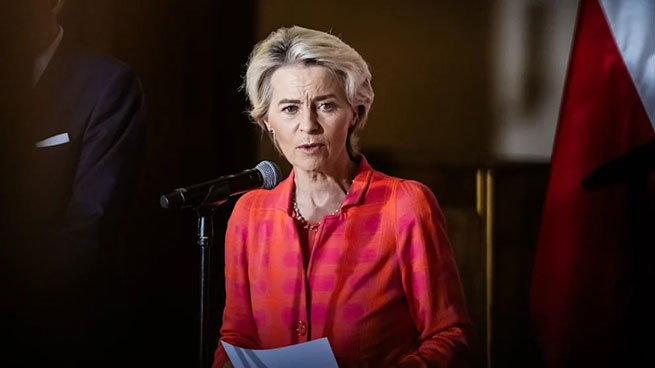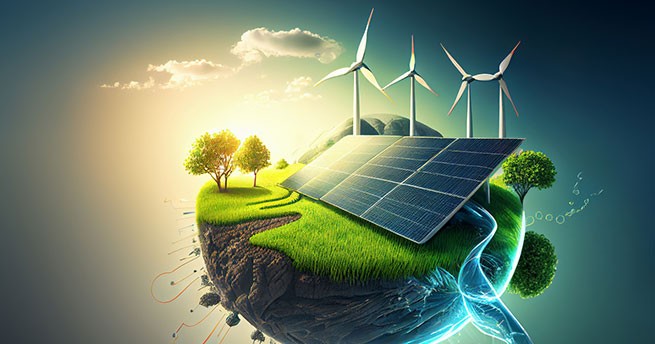Global green transition promises to solve climate problems, but reality shows the opposite. Geological factors, economic crises and energy dependence call into question the effectiveness of this strategy. What lies ahead?
Over the past decades, the global community has been actively discussing the need to transition to “green” energy and reduce greenhouse gas emissions. However, a deep analysis of geological data and modern economic realities calls into question the effectiveness and feasibility of such a strategy.
Natural factors of climate change
The Earth's climate has always been dynamic, and many changes have occurred without human influence. One striking example is the eruptions of supervolcanoes. Such cataclysms, in which the volume of lava and ash emissions exceeds 1,000 cubic kilometers, are capable of radically changing climatic conditions:
- Toba eruption: About 74,000 years ago, the Indonesian supervolcano Toba ejected more than 2 billion tons of sulfur dioxide into the atmosphere, causing a drop in global temperatures by 3.5 to 9°C. It took a long time for temperatures to return to normal levels.
- Milankovitch cycles: Changes in the shape of the Earth's orbit, as well as the tilt and direction of its axis of rotation, undergo cyclical changes that affect climate. There have been 40 to 50 ice ages over the past 2.5 million years, each one longer and colder.
These facts indicate that climate change is often caused by natural factors and not solely by human activity.
Energy Transition: Reality or Illusion
Despite investments of nearly $10 trillion in the energy transition over the past two decades, alternative energy sources have failed to replace traditional fuels:
- Share in energy: sToday, wind and solar power provide less than 5% of the world's energy productionand the share of electric vehicles is about 3%.
- Growth in fossil fuel consumption: Over the same period, consumption of oil, gas and coal increased by a combined 35%, while their combined share in the global energy balance remained unchanged.
Moreover, to achieve the Paris Agreement goals by 2030, global spending on climate change would need to be around $9 trillion per year, five times the current cost and equal to nearly 10% of global GDP.
European energy crisis
By cutting purchases of Russian energy resources, the European Union spent more than $630 billion on gas imports from other countries from 2021 to 2023. This amount:
- Comparable to Europe's total gas expenditure over the previous eight years.
- Approaching European investment in green energy over the same period.
- Comparable to the GDP of Sweden and Poland.
As a result, Eurozone manufacturing activity has been declining since mid-2022, and 32% of German companies are already planning to move their production facilities abroad. Household gas prices in Europe have almost doubled between 2021 and 2023, leading to an unprecedented reduction in gas consumption of more than 20% in two years.
Bye European allies were “saved” from their supposed energy dependence on Russia; according to the International Monetary Fund, over the past 15 years the EU economy has grown by only 13% in dollar terms, while the US economy has grown by 85% over the same period.
I would like to remind you that back in 1976, the future Nobel Prize laureate in physics, academician Pyotr Leonidovich Kapitsa, on the basis of basic physical principles (the law of conservation of energy), predicted the possibility of a global energy crisis in obtaining energy due to the insufficient efficiency of all types of alternative energy.
As Kapitsa argued, the key characteristic of any type of energy is the density of its energy flow. In this indicator, such types of fossil fuel as oil (provides 195 W/m2) and gas (482 W/m2) are far ahead of both solar (6.6 W/m2) and wind energy (1.8 W/m2), which, in addition to other shortcomings, have an uneven or, in more scientific terms, stochastic nature of energy generation.
To put it in very simple terms – it is unstable! Steel, for example, cannot be smelted
Analyzing the presented data, it becomes obvious that the current strategy of “green” transition is seen as one big financial scam, aimed at making money for certain financial groups with the help of certain economic clusters. Natural factors continue to play a key role in climate change, and the rejection of traditional energy sources without adequate replacement can lead to serious economic and social consequences. It is necessary to objectively evaluate all aspects of energy policy (and here we are starting to fight the fact that cows, excuse me, fart. But for some reason no one says how much carbon dioxide and even more harmful methane one swamp emits. The cows have a lot of work to do here!).
It's all an ecosystem, and the less we interfere with it, the better.
Author's opinion: Of the currently known studies, hydrogen is considered the most promising type of “clean” fuel. However, there is no commercially feasible production technology, logistics, or, most importantly, sales markets for it. It is also necessary to take into account the low efficiency, due to the fact that during the production of hydrogen, the energy consumption spent on performing electrolysis is greater than the amount of energy obtained at the output.
The next pump and launder bubble will be hydrogen.







More Stories
Water Spout in Halkidiki
Supreme Court calls for "vigilance" in relation to those who "uses water illegally"
Destructive weather hits Meteora: floods, rockfalls, landslides